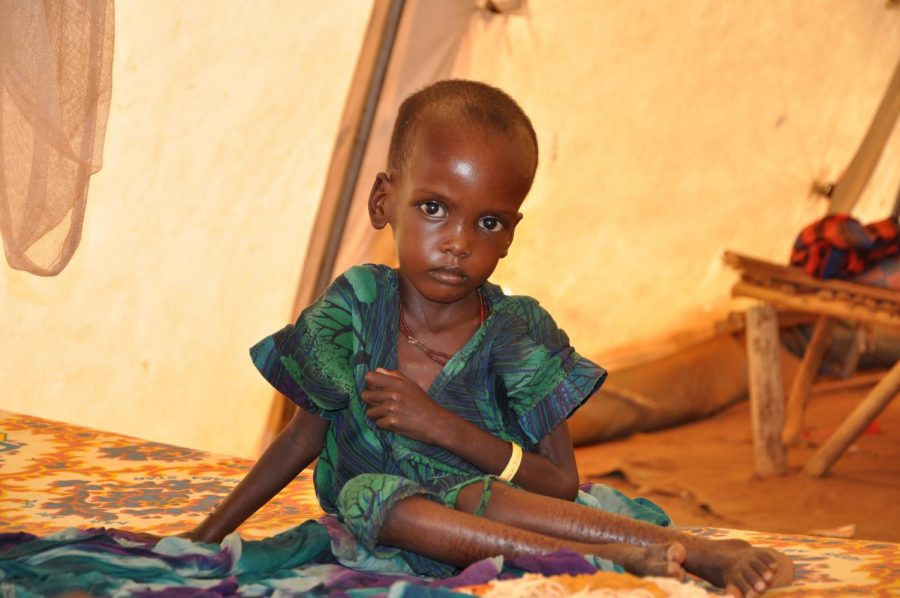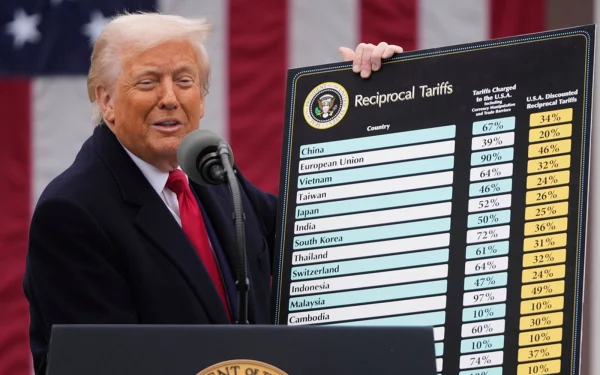A Hunger Pandemic
Courtesy of UK Department for International Development
A malnourished child waiting for his next meal.
As COVID-19 lingers on, food insecurity rises across the globe. The lack of a nutritious and sustainable diet was already a pattern for many groups and individuals in pre-pandemic life, but when COVID-19 entered the picture, the unemployment rates and the economic decline led this crisis to a breaking point.
Food insecurity is a problem that stems from the unavailability of money or other resources, coming in different forms. It can be seen at the household level when a parent cannot afford to feed their child, while it can also be perceived from a larger scale when poor communities struggle with accessing food on a regular basis. Since COVID-19 surfaced and threw the world into disarray, businesses and shops have closed, and jobs were lost, wherefore many scenarios of food insecurity have worsened. According to the United Nations Project, the number of food-insecure people worldwide may reach 265 million by the end of 2020.
This crisis has severely affected countries in Africa, where 60% of the economically active population thrives on agriculture. Thus far, COVID-19 has interfered with the production, transportation, and trade of food in the continent as border restrictions prevented farmers from getting their usual supply of seeds, fertilizers, crop protection products, and other sorts of equipment in time for planting season. With the main sector of their economic life ceasing, many African farmers were stripped of their daily wages which paved the way for unexpected hardships of poverty and undernourishment in their households. According to the United Nations Conference on Trade and Development, total merchandise exports are expected to contract by 17% in 2020. This could deeply imperil the African economy and increase the food insecurity trends that were sweeping through the continent even before the pandemic unfolded. In South Sudan, COVID-19 has interlaced with the already existing food shortages, climate shocks, growing economic crisis, and meager agricultural production. Now, 55% of the country could undergo acute food insecurity this year, according to the latest analysis by the Integrated Food Security Phase Classification.
Hunger also crawled its way through the lives of many Americans. Across the country, the labor market collapsed due to lockdowns, and it wasn’t long until many individuals lost their jobs and found themselves in a difficult state. Inevitably, putting food on the table became a much harder task, and as the number of people employed in supermarkets and other stores dropped, the number of those who could afford the items on the shelves declined as well. Thereupon, in 2020, households have been subject to an unparalleled and critical plight of food insecurity. According to an estimate by researchers at Northwestern University, COVID-19 is responsible for a 23% rise in food-insecure households since last year. This is a new and scary reality for the US. COO at Feeding America Katie Fitzegerald claims, “You’ll pay for medicine, rent, your mortgage, and your car so you can get to your job before you buy your groceries. People don’t have enough money for the food they need, so they skip meals or eat unhealthy food that’s a lot cheaper. This is what food insecurity looks like in America.” As people fall into this cycle of choosing between priorities, they are prone to sacrificing their nutrition by starving or resorting to fast-food in order to find a job more easily.
Lisa Hoffmaster is the development funder for Food Finders which is an organization located in Southern California that is dedicated to rescuing and distributing as much food to as many people in need as possible. Hoffmaster describes how the outbreak was a period of misdirection for the program because “nobody knew what to do and how to act.” Many volunteers of the organization were seniors who themselves became a vulnerable target during the pandemic and couldn’t render assistance anymore which led to over four hundred agencies stopping food distribution. Due to the lack of additional support for fragile communities, “the lines of people waiting for food doubled and tripled,” As of recently, most Food Finders agencies are running once again, but this time with fewer and younger participants who wear masks, gloves, and use hand sanitizer to adhere to the COVID-19 guidelines and to protect all people involved.
As scientists continue to estimate how much longer the world will have to endure this pandemic, food insecurity might not be going anywhere anytime soon. However, there are ways to fight this crisis; organizations such as Feeding America, Share Our Strength, Meals on Wheels, Action Against Hunger, Food Finders, Bread for the World, and many others are looking for donations and volunteers that can help to end undernourishment worldwide.






